Of Serenity and Vibrance: The Colorful Dreams of Annabel Faustin
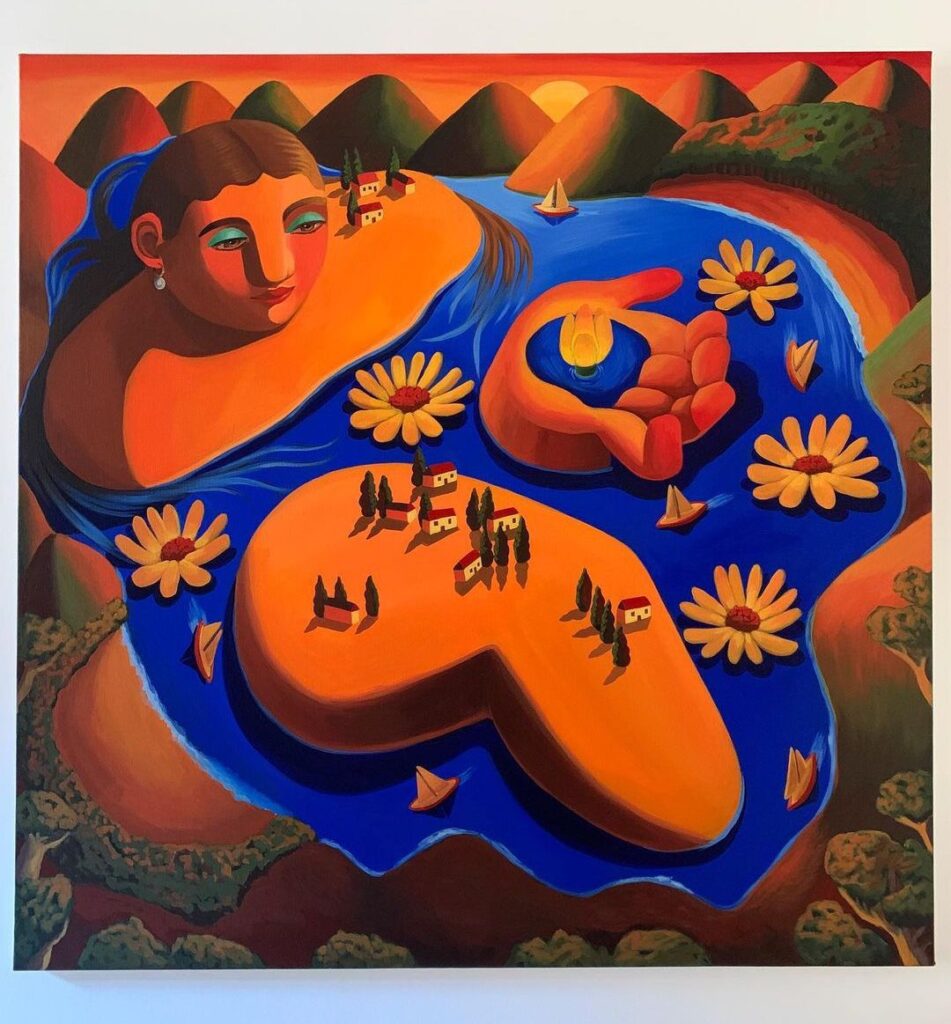
For French painter Annabel Faustin, her dreamlike paintings served as a form of therapeutic expression, originating from her early work which conveyed subjects of sleeping characters, expressing her own tiredness at the time.
Words by Olisa Jr.
Through deep-toned palettes, tender landscapes of the moon and stars, the subtle serenity in her subject’s gaze, and the portrayal of timeless solace, Annabel Faustin’s paintings became a cathartic vessel to explore her intimate feelings and connections to the world. “Like many artists before us, our duty during troubling times is to keep bringing light, peaceful thoughts, and evasion to people through art and culture.”
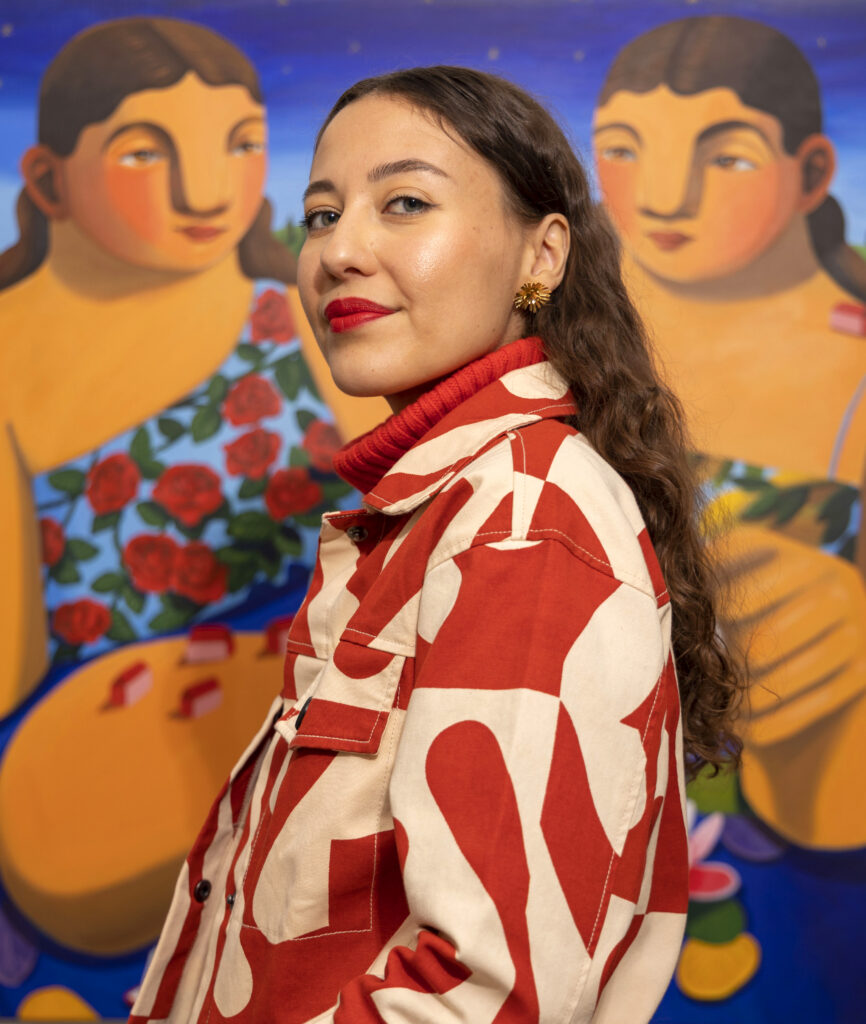
Her work holds an unparalleled level of seraphic essence in all aspects of its presentation, establishing a pure form of equilibrium between its visual and conceptual meanings. Annabel’s work also renders a truly remarkable visualisation of graceful, sororal love which speaks to her inspiration from French artist Niki de Saint Phalle, acutely using her work as a container for social commentary on feminism and gender hierarchies.
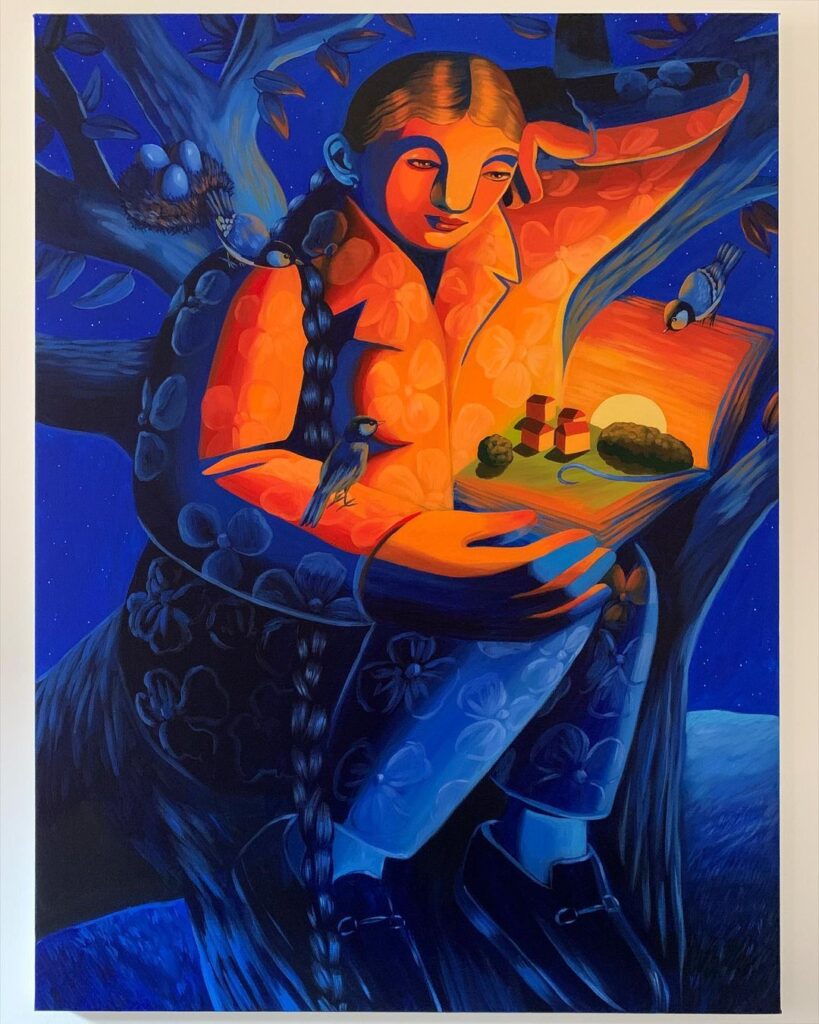
Tell me a bit about your upcoming exhibition? What was the creative process like?
Annabel: I just had my first physical solo show at the beginning of the year and it was a big personal achievement for me. Now, I will be part of several upcoming group shows in 2022 at Galerie Zberro. The next upcoming shows will be two group shows in April and one in June. The first group show from 2nd to 13th April will be entitled ‘Contemplations’, alongside two other painters: One Kean and Tim Blandin, who I share the same fascination for nature with. The show will highlight three different ways of seeing nature. My way to paint nature is surrealist. I paint a world where human beings have fully merged with their environment and do their best to take care of it and enjoy it without destroying it.
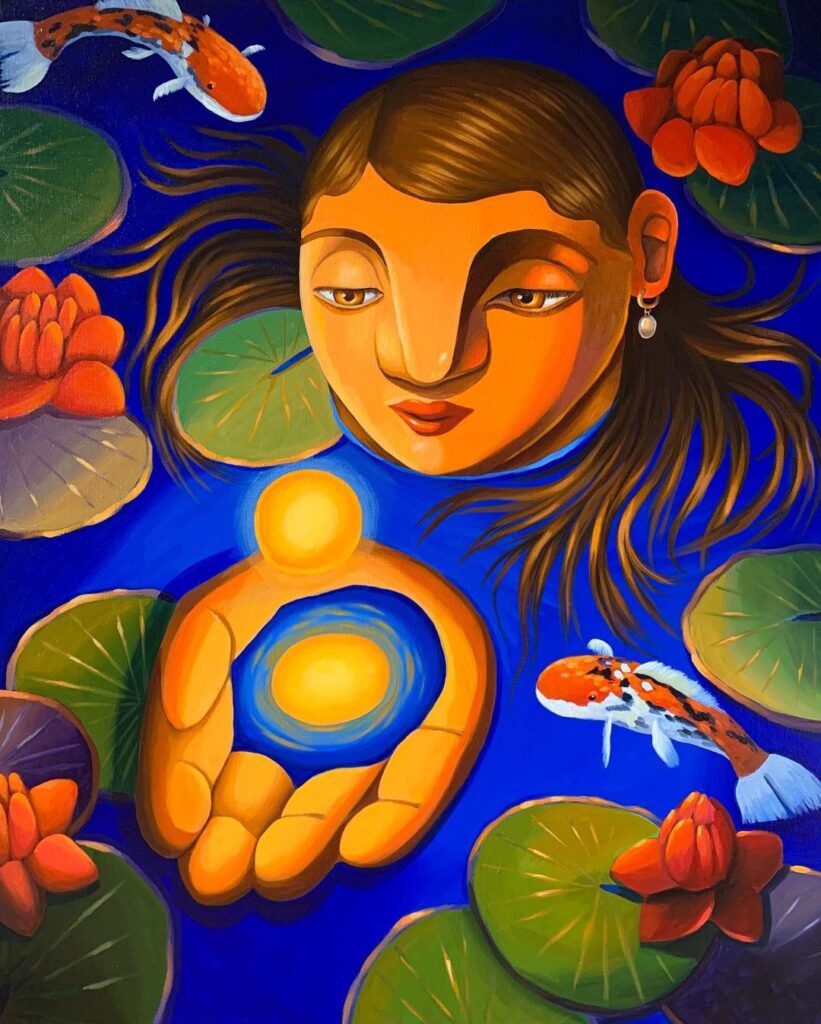
What are the guiding themes and underpinnings, and how do they differ from your last exhibition?
Annabel: Since I don’t work in an office anymore, but in my home studio, I am way more connected to nature. Even in a big city like Paris, we have huge gardens and forests around. I get very inspired by the season’s changing and the colours of nature around me. My last solo show was dealing with having a harmonious relationship with nature and the introspective mood we feel during Autumn and Wintertime, with deep forests and sunset lights. The next upcoming shows will also develop these themes but we can feel the Spring arrival through the new paintings. Friends, animals, and the sun are now joining the party, making my paintings more joyful and awake.

“Sometimes, I feel nostalgic about the relationship I had with my body as a child. I have never felt freer than I did at that time. My body was just a tool to experiment with the world and play, not an object that had to be beautiful to seduce people.”
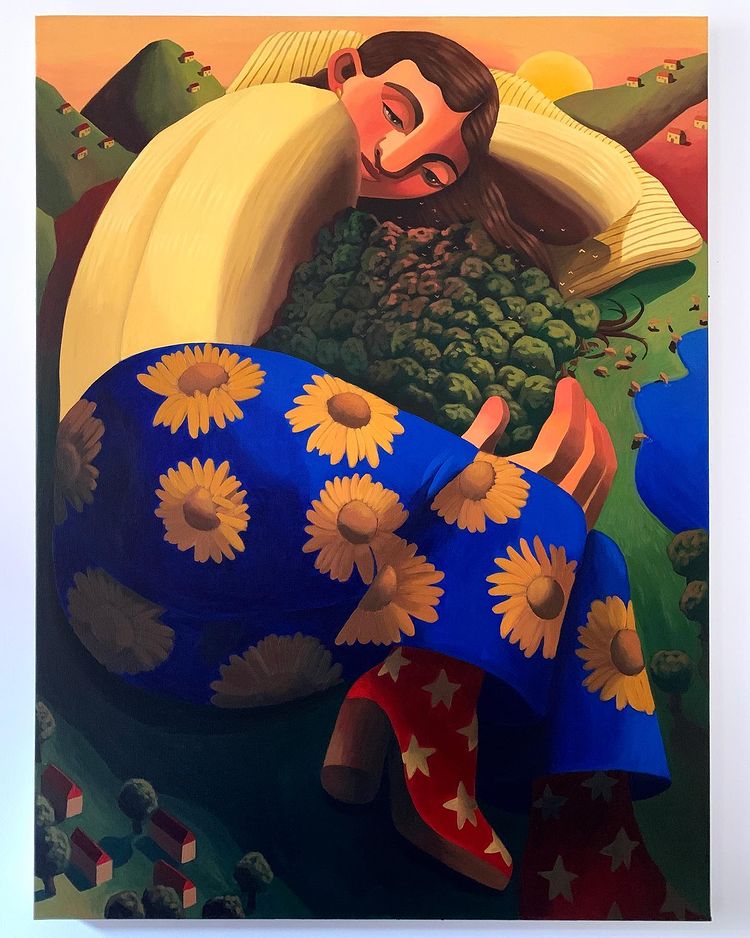
How are you able to translate your current state: emotions, new friends, daily experiences, and even more, the world around you into your paintings?
Annabel: Every day is reborn with a new way of feeling and experimenting with the world. The world keeps changing and we do too. I am fascinated by the different changes happening inside and around us. As you say, the pictures I see in the media, and the conversations I have with my friends and family are good reflections of the world’s changes. I try to connect to all of that and observe what kind of pictures people and I would need to see to feel better. I obtain a kind of silent and deep intuition. Right now, for example, I feel people need calm, comfort and security more than ever, even if we are coming into Springtime. So after that, I draw to obtain the right expression of that feeling.
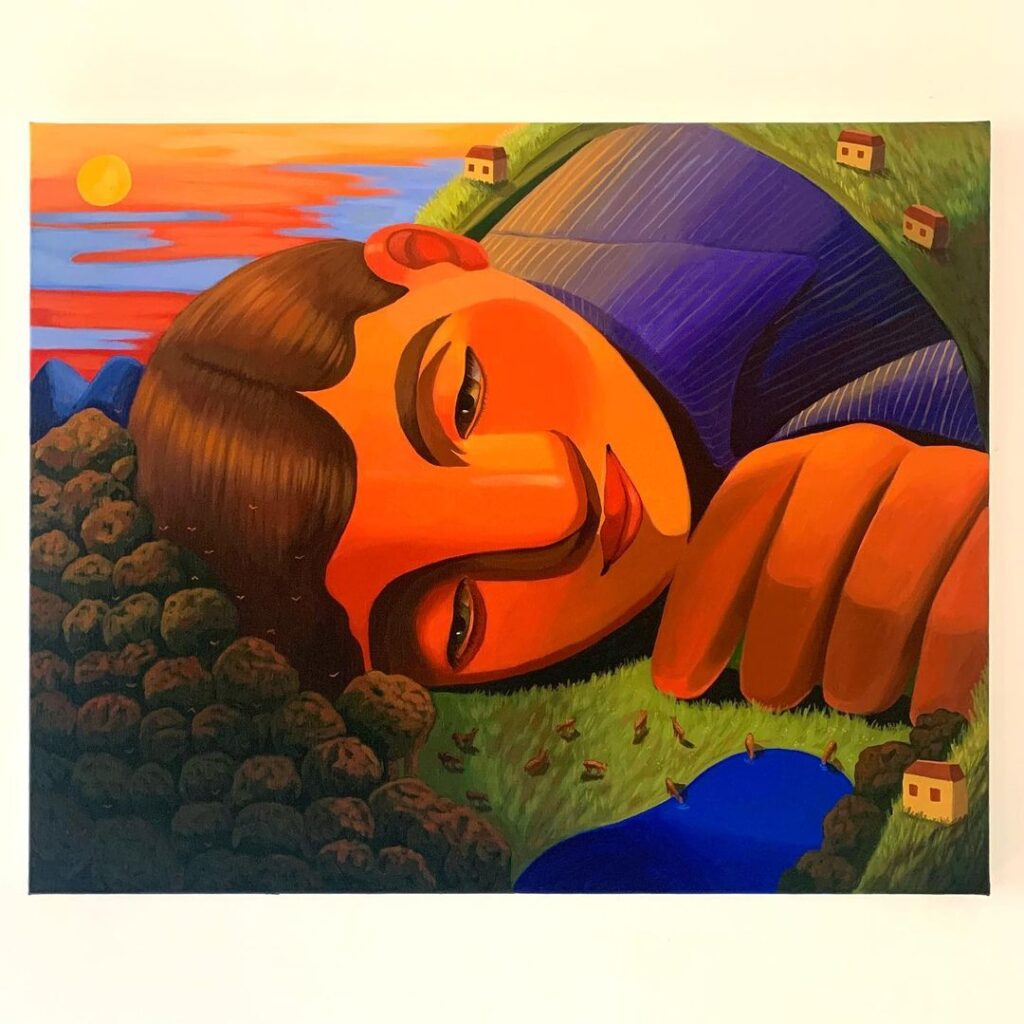
Speaking on emotions—so much of your work beautifully reflects serenity, calmness, and the uncanny peaceful feeling of nighttime, especially conveyed through female subjects. Would you say it was a conscious decision to paint only female subjects?
Annabel: It was a decision indeed. When I began to paint again a few years ago, I painted both genders, though the more intimate my work became, the more I needed to paint more women. When I was younger, during my history of art lessons, I saw so many clichés and useless sexualization in the representation of women, yet, there were so few women artists that I realised that it was still important to share a female gaze on women’s body in this time. Sometimes, I feel nostalgic about the relationship I had with my body as a child. I have never felt freer than I did at that time. My body was just a tool to experiment with the world and play, not an object that had to be beautiful to seduce people. So, the women in my painting are huge and round, as strong as nature they are part of. Some houses and trees are popping on their shoulders and legs. Their bodies are clearly a part of a woman’s utopia and not a male fantasy.
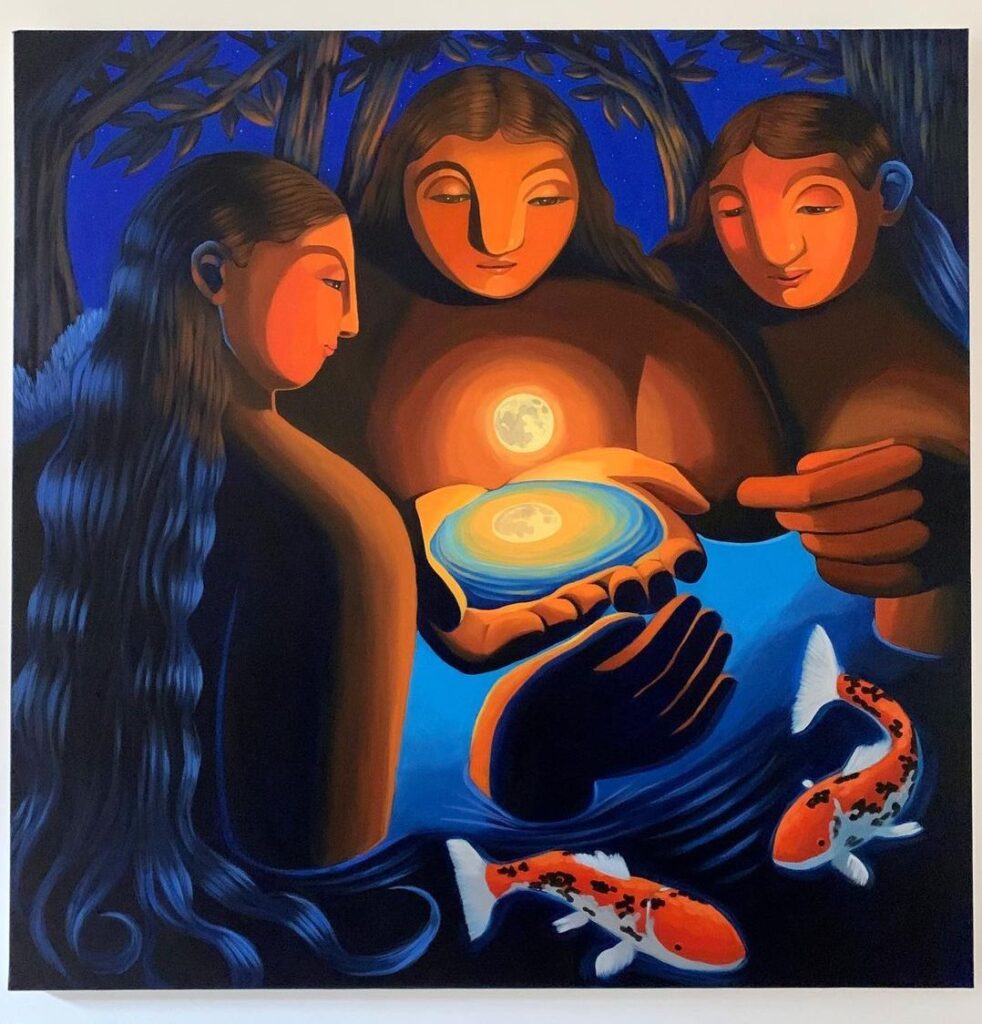
How do you think growing up in Toulon and Paris affected the aesthetic, focus, and composition of your work as an artist?
Annabel: I grew up in the south of France on the French Riviera, surrounded by the sea, the mountains and an eternal blue sky. It clearly influenced my use of bright colours and the predominance of nature in my painting, but living in the south of France is also a whole philosophy. Life in the south is closer to the Italian ‘dolce vita’ than to the Parisian spirit. Life there is very slow. People take the time to talk to each other, eat, sleep, to live. Work and career are generally less important than family and hobbies. When I arrived in Paris at 18, it was a big change. Parisians were less open to strangers and they often care more about how you earn your life than about your personality. I have always found the Southern way of life more true and authentic. That’s why I do my best to paint these values. When you look at my characters evolving in sunny landscapes, they are so tall and soft, and you cannot imagine them moving fast and doing a thousand things a day that they noted down on a to-do list!



On the subject of using art as a form of therapy, how much has your craft helped heal feelings of loss or grief in your life?
Annabel: My father was a fireman and a painter. He was so passionate about art that he was able to enrol at a school of fine arts to obtain a diploma while also working as a fireman. At 37, he passed away in a plane crash during a mission, and at the time, I was only 5. The first memory of painting I have was with him in his art studio. I remember the smell of oil painting, and the subtle light on the fruits he was painting. As a child, I viewed him as a magician. We didn’t have Instagram to show our work at the time, so I stopped painting. I studied design and art direction, and I began a career in retail design for luxury brands in my 20s. After 5 years of working in the beauty business, I realised I was missing something. Freedom to create, and even more, the freedom to organise the day as I wanted. Every day, I was thinking of my father who had the same strong passion for art but didn’t have the time to fully live it. Life is too short! Now, I am a full-time painter and I feel more peaceful and in the right place, as if I was pursuing my father’s legacy.
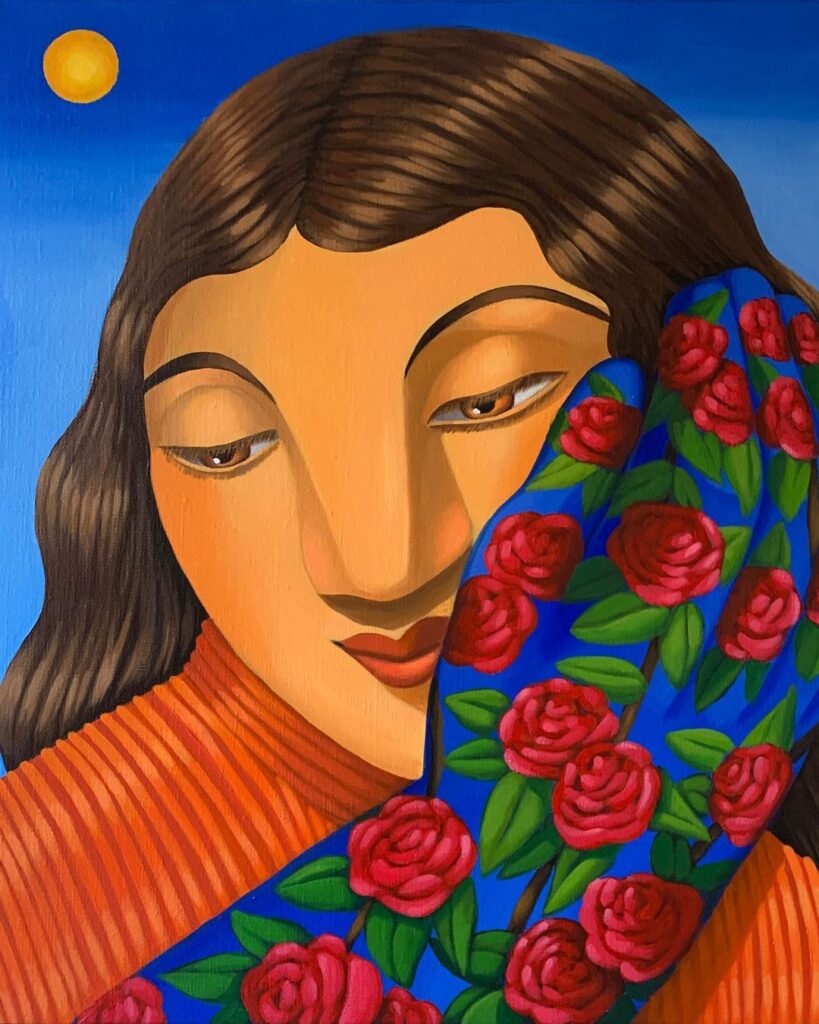

Would you say that art has made you more comfortable in your own skin?
Annabel: When painting came back into my life around the age of 28, I was far from imagining it would help me as much as it does today. Like lots of young artists, my first aim was to paint aesthetic paintings. Then, I had the need to paint more unique paintings, so I searched for myself. And the adventures began. Painting helps me to calm my anxiety by expressing positive pictures that make me feel well. It also helps me to explore myself as a human being and to reconnect with my past and my fantasy. Finally, it helped me to connect to people on a level I could never imagine. As my paintings explore deep feelings, people write to me on Instagram about the very personal emotions that they feel, sharing with me how much my paintings help them to feel better. I couldn’t imagine art could be so powerful and speak to so many different kinds of people.
Besides the act of healing, what other purpose does your work serve towards yourself, and also the world at large?
Annabel: We are surrounded by stressful pictures we see in the media all day long. These pictures make us feel not enough, not rich enough, not adventurous enough, not thin enough… so when I began to make art and to ‘produce’ new pictures, I wondered: “Do I want to make people feel worse about themselves or do I want to make them feel good and feel loved in front of my paintings?” The answer was obvious to me. So every day, I tried to share some optimistic and sweet visions of the world with my gallerist, my collectors, and my followers. Also, as an artist, I feel that my aim is also to paint about my time and to enhance the positive or negative changes I observe in society. Right now, I do my best to immortalise the ecological and feminist movements that are happening during these times.
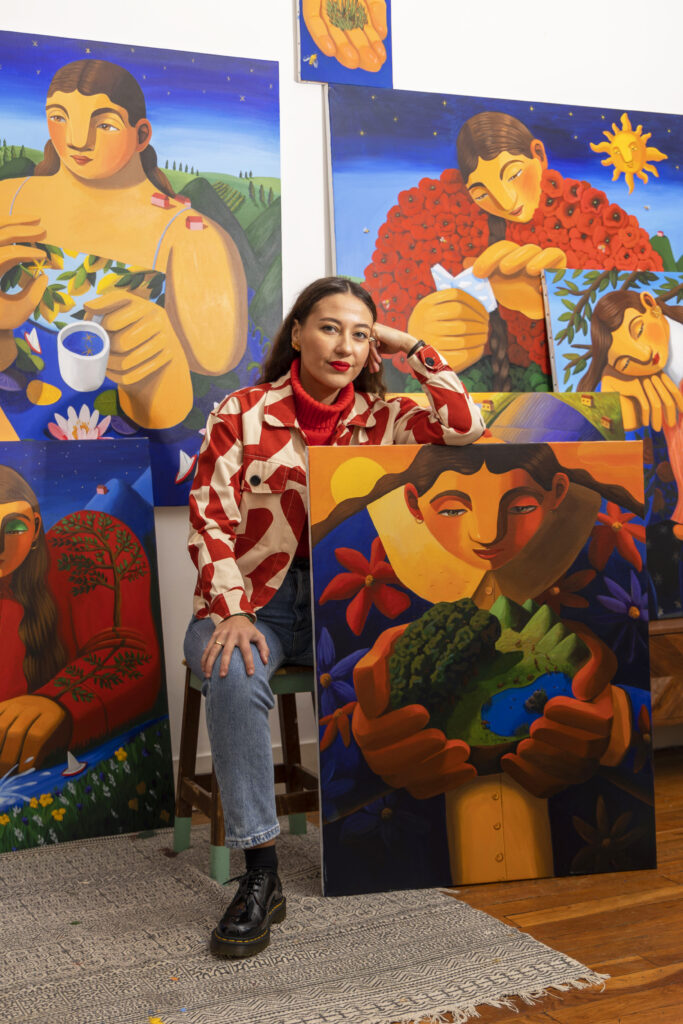

You’ve previously mentioned your inspiration from the French artist Niki de Saint Phalle. What made her work so special to you? And how were you able to convey that shared expression in your own work?
Annabel: I have always admired people who achieved so much and were able to transform their trauma into pure joy and hope for other people. Much like me, Niki de Saint Phalle experienced trauma in her childhood, but as she grew up, she created this colourful and powerful feminine universe, and because of the visible lightness of her art, it became so popular. Her art was very political and committed to the documentation and commentary of feminism.
There’s something truly enchanting about the visualisation of tender sororal love within your paintings, both in the bold and subtle details in which they’re expressed. What story or message is this trying to tell?
Annabel: As a woman myself, I can tell that sorority is not just a trendy word but a reality. I have been raised by several women who didn’t realise how strong they were and how confident they could be about themselves. I observed that there is real solidarity that exists between women that make us stronger. For example, there is a lot of help and support for women in art. Lots of women curators, journalists, gallerists, and fellow painters helped me at the beginning. It is essential that women help and inspire each other to become aware and to show the world how powerful we are both alone and together, without any men helping around. It is essential to become freer and finally obtain equality.
Check out the GUAP Arts & Culture section, to discover new art, film, and creative individuals.




![ZINO VINCI’S ‘FILTHY & DISGUSTING’EP BRINGS YOU TO THE CORE OF THE ARTIST [@ZinoVinci]](https://guap.co/wp-content/uploads/2023/10/Zino-4.jpg)

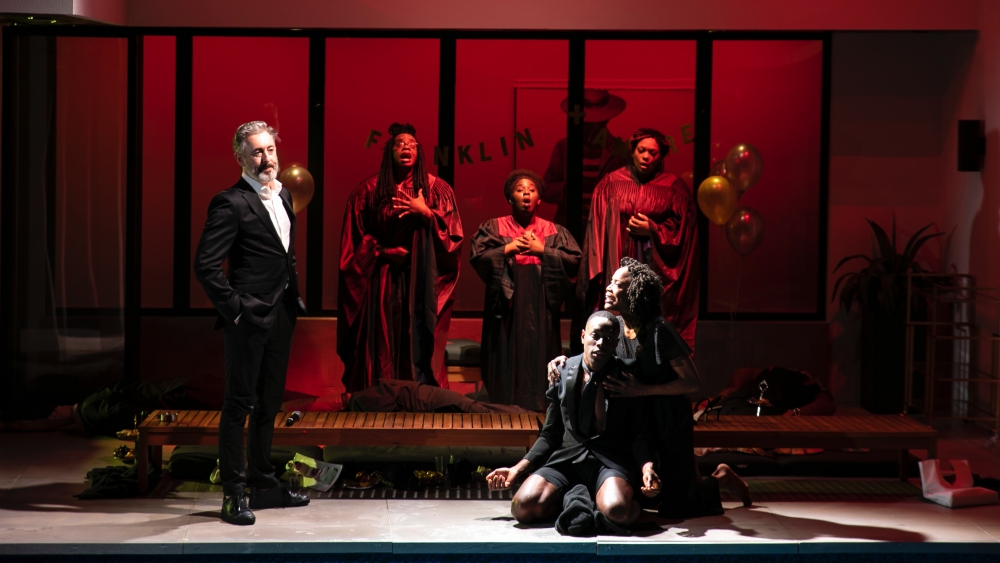
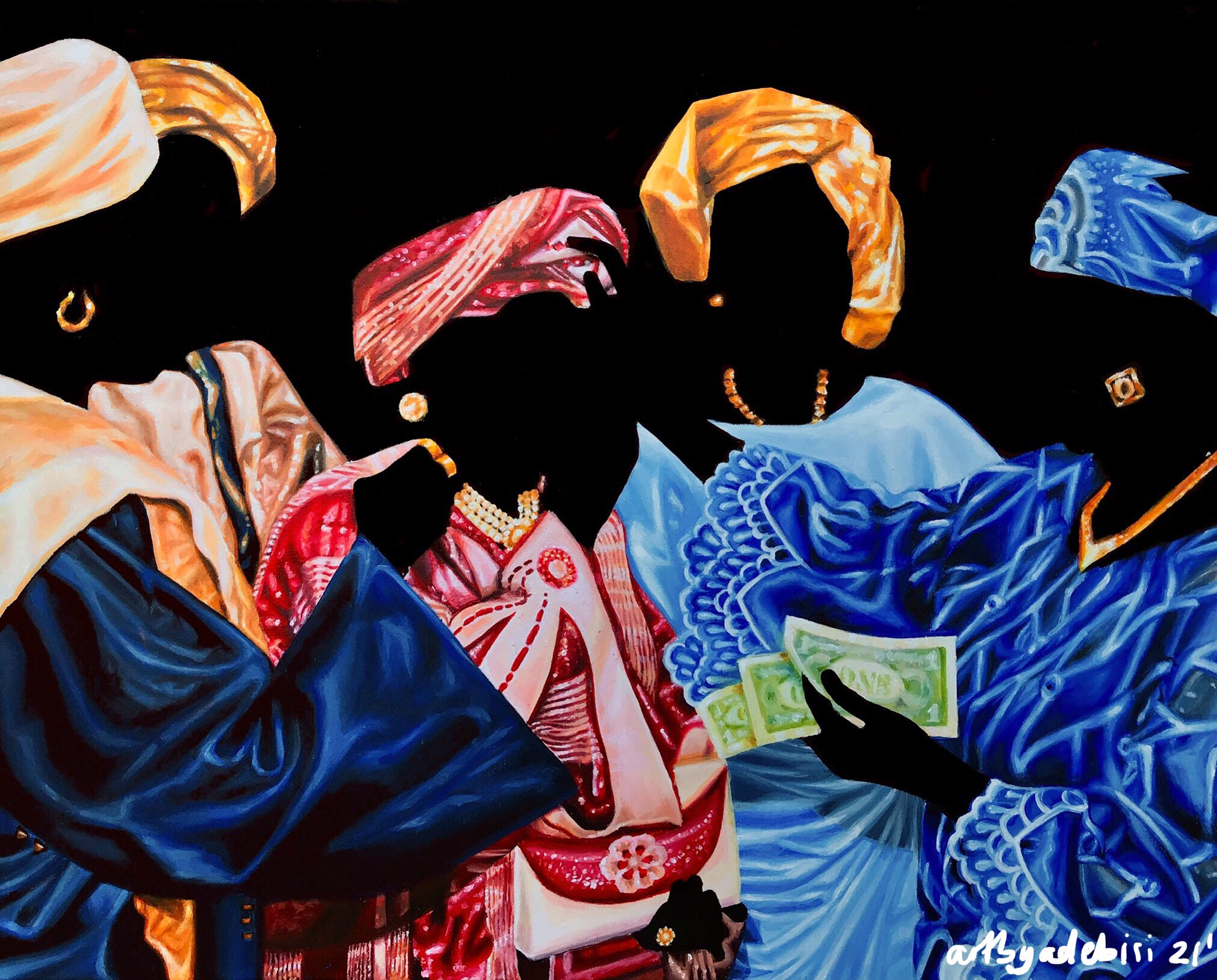


![Remel London’s [@Remel_London] “Mainstream” is a must attend for upcoming presenters!](https://guap.co/wp-content/uploads/2017/02/REMEL-LONDON-FLYER-FINAL-YELLOW-COMPLETE-1.png)